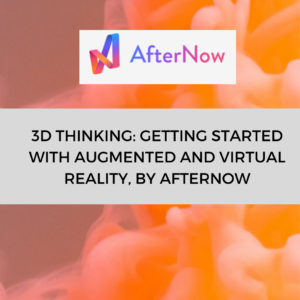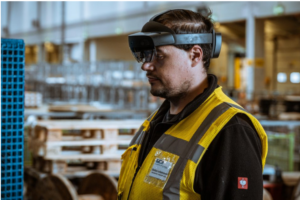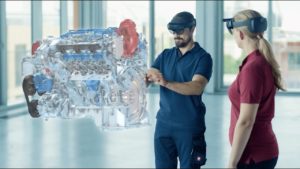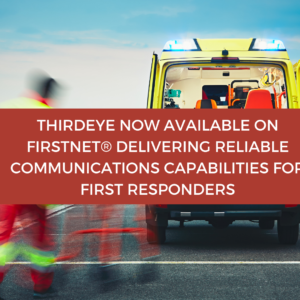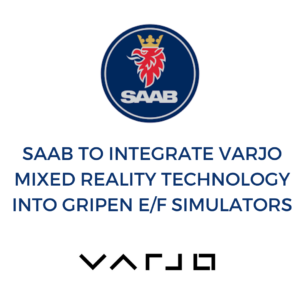The digitization of processes in the logistics centers is an important factor for this. For Rexel Germany it was particularly useful to find new solutions for the regular in-house tours and maintenance. With Inspect AR from Microsoft partner Netcetera, these work processes can be made even more efficient on Microsoft HoloLens 2 in the future.
Support for employees with security checks
If you imagine a logistics center with its huge buildings and technical systems, it becomes clear how important special measures are here for fire protection and the safety of people and objects.
For this reason, employees at Rexel Germany previously had to use manually managed Excel lists to check at regular intervals whether the fire extinguishers were always in the right positions and ready for use. During such tours there is a risk that checkpoints on the list have been mixed up or left out. In addition, the employees needed time to orientate themselves in the warehouse.
With Inspect AR on HoloLens 2, employees are now guided to the right places in the logistics center by holograms. The Microsoft Azure Spatial Anchors technology locates each test point geographically in the building. At the examination points, employees also receive supporting information in the form of images, videos and texts and can confirm the points in real time on digital checklists.
In this way, the new digital solution with Inspect AR on HoloLens 2 increases the overall accuracy with which security tours are carried out. In addition, the mixed reality solution also simplifies the onboarding of new employees who do not yet know the building. You will be guided step by step through the logistics center by Inspect AR on HoloLens 2.
With HoloLens 2 and Inspect AR, everything is in the right place
Another challenge in the logistics center is to equip all workplaces with the necessary materials. For this purpose, regular tours are carried out, during which the employees check whether there are dispensers for adhesive film, printing equipment or similar materials at all workplaces.
In order for the colleagues to find their way around the desk, the materials should always be placed in the same position and functional. Various sample tables, which are compared with the workstations on checklists, serve as templates. In the previous work process, employees of Rexel Germany noted such steps with manually managed Excel lists.
Logistics employee carries HoloLens 2 in the logistics center
The new process with Inspect AR on HoloLens 2 simplifies this significantly: Employees put on HoloLens 2 and have their hands free for their tasks throughout the work process. At the same time, all the information required can be conveniently displayed in the field of vision.
In addition, there is no need to compare the printed checklists, because all information is digitally fed directly into the Inspect AR web management tool. This enables digital management of the entire process – from creating templates for work instructions and checklists, through creating and monitoring tasks, to viewing results reports.
“With Inspect AR and Mixed Reality, you can switch from paper to digital work instructions in just a few hours, instead of taking days or weeks. Our software makes the know-how of experts available virtually on the real object. This has the following advantages: Faster execution and more efficiency, clear documentation with photos, videos, text and a 100% transparent overview of all processes. ”- Elias Remele, Business Development Manager Netcetera
Thanks to the digital database of tours and maintenance with Inspect AR on HoloLens 2, Rexel Germany now quickly receives a comprehensive overview of work processes and can further optimize them based on this.
“Even greater security for our employees in the logistics center, reliable processes for our customers and a reduction in our CO2 footprint: with the introduction of mixed reality test processes in the logistics center, Rexel Germany is consistently taking the next big step towards digitization and sustainability.” – Nicole Steuer, company spokeswoman Rexel Germany.
Read Microsoft’s AREA member profile here
